Last updated: April 23, 2025
Article
Nuestra Herencia Mural
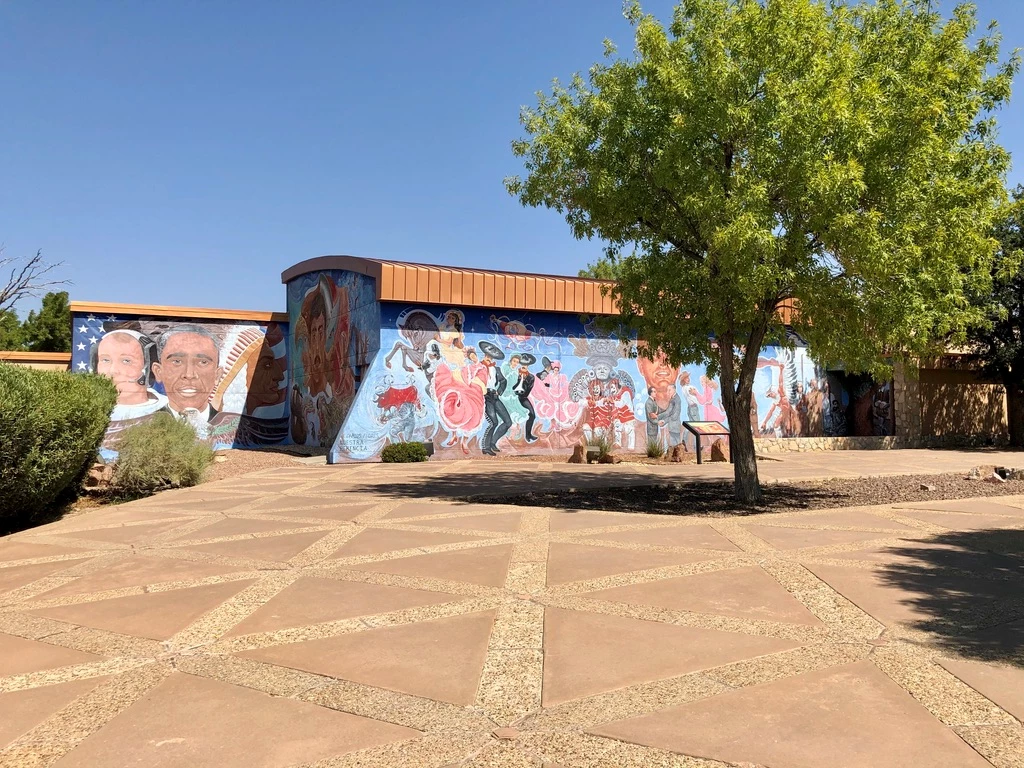
NPS
See the Nuestra Herencia mural as you walk along the paved esplanade toward the Chamizal National Memorial Cultural Center. The story of the regional blending of cultures is captured in this mural through the symbols and images of the United States and Mexico. Its title, Nuestra Herencia, means “Our Heritage.”
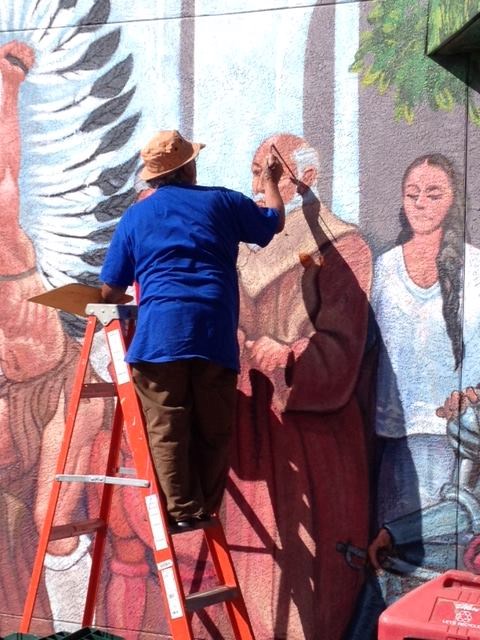
The Artist And The Mural
The artist, Carlos Flores, studied at La Academia de San Carlos in Mexico City under Alfaro Siqueiros, one of Mexico’s greatest muralists. Mr. Flores, who lives in El Paso, Texas, also has an indoor mural in the Lincoln Center in Washington, D.C.
The 18- by 120-foot painting is one of a series of major murals located throughout El Paso that were funded by the Junior League of El Paso. Nuestra Herencia was painted by Carlos Flores in 1992 and touched up in 1997. Chamizal National Memorial commissioned a restoration in 2014, which was completed by the artist and his son, Marco, in 2016 for the park's 50th anniversary and the National Park Service Centennial.
United States Heritage
The first panel reflects the rich cultural diversity of the United States. It also represents the astonishing feats, inspirational achievements, and enduring legacies Americans possess in their shared history as symbolized by Neil Armstrong, Barack Obama, and an American Indian leader. An eagle is shown holding arrows in one talon and the olive branch in the other: the symbols of war and peace.
Updated Panel
You may wonder how the artist foresaw Barack Obama's accomplishment as the nation's first Black president when he painted the mural in 1992! In fact, his first rendition featured opera singer Marian Anderson. When the mural was restored in 2014, artist Carlos Flores, in consultation with park management, altered the panel slightly to update the symbols used to convey the same message as the original. It is also significant that Barack Obama, as a sitting president, visited Chamizal National Memorial in 2011.
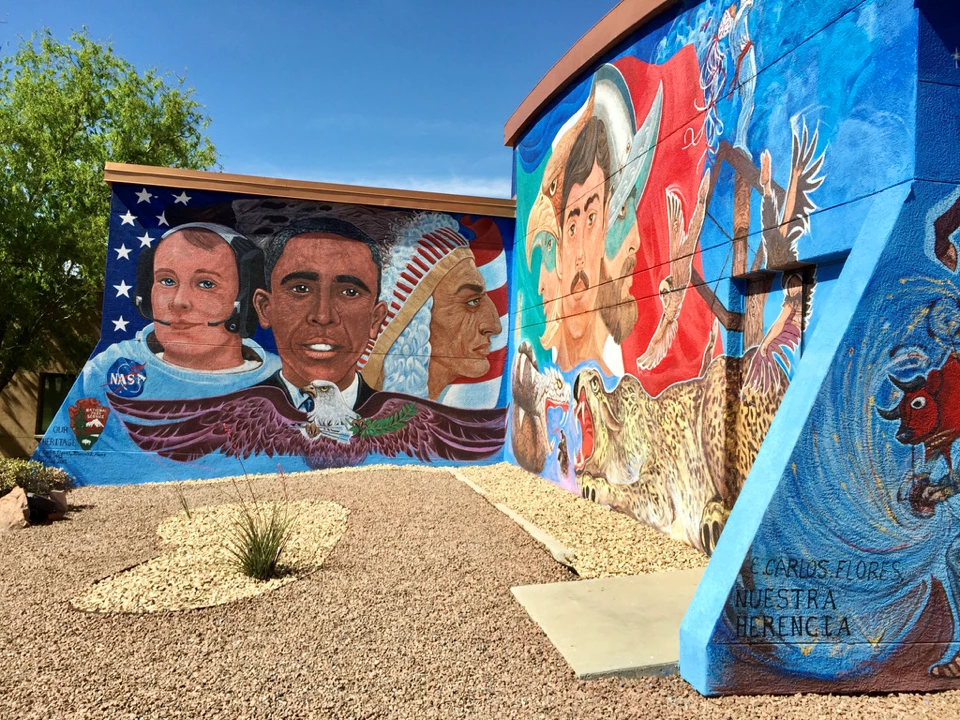
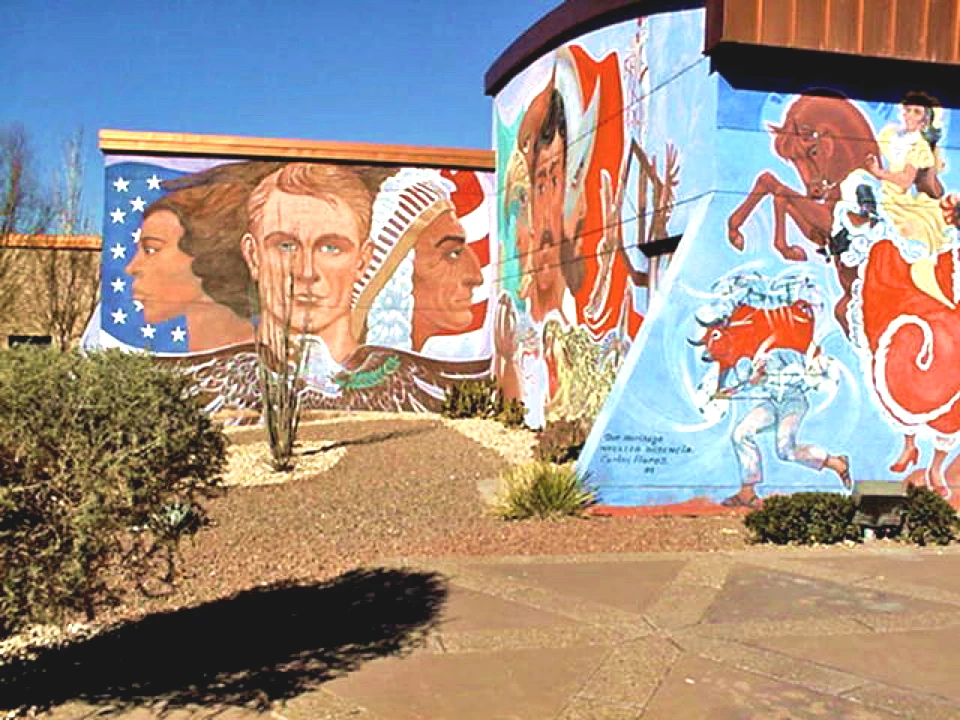
Left image
First panel of the mural after the 2014-2016 restoration
Credit: NPS
Right image
First panel of the mural as it was painted in 1992
Credit: NPS
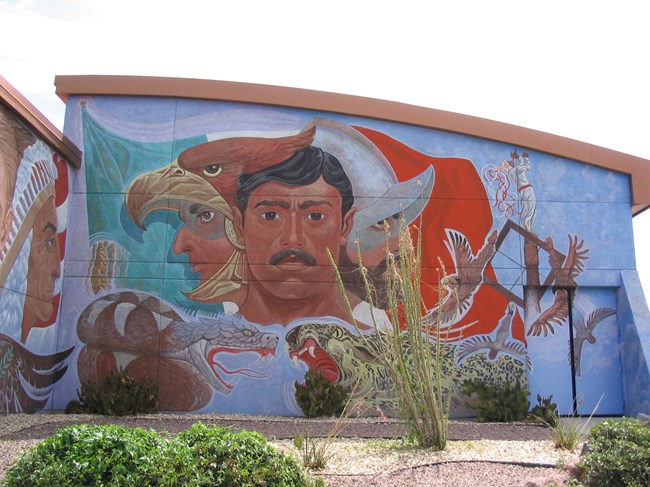
Mexican Heritage
The second panel aims to show the duality of traditional Mexican cultural identity. Of people with Mexican ancestry, the vast majority has both European and American Indian heritage. The serpent, Quetzalcoatl, and jaguar, Tezcatlipaca, symbolize theToltec Indians.
To the right, in the Dance of the Flyers at Papantla, the men dressed as birds are voladores leaping from the tower. The priest on top of the platform hails the gods, and the flyers represent their words descending to Earth as they speak to the Mexican people.
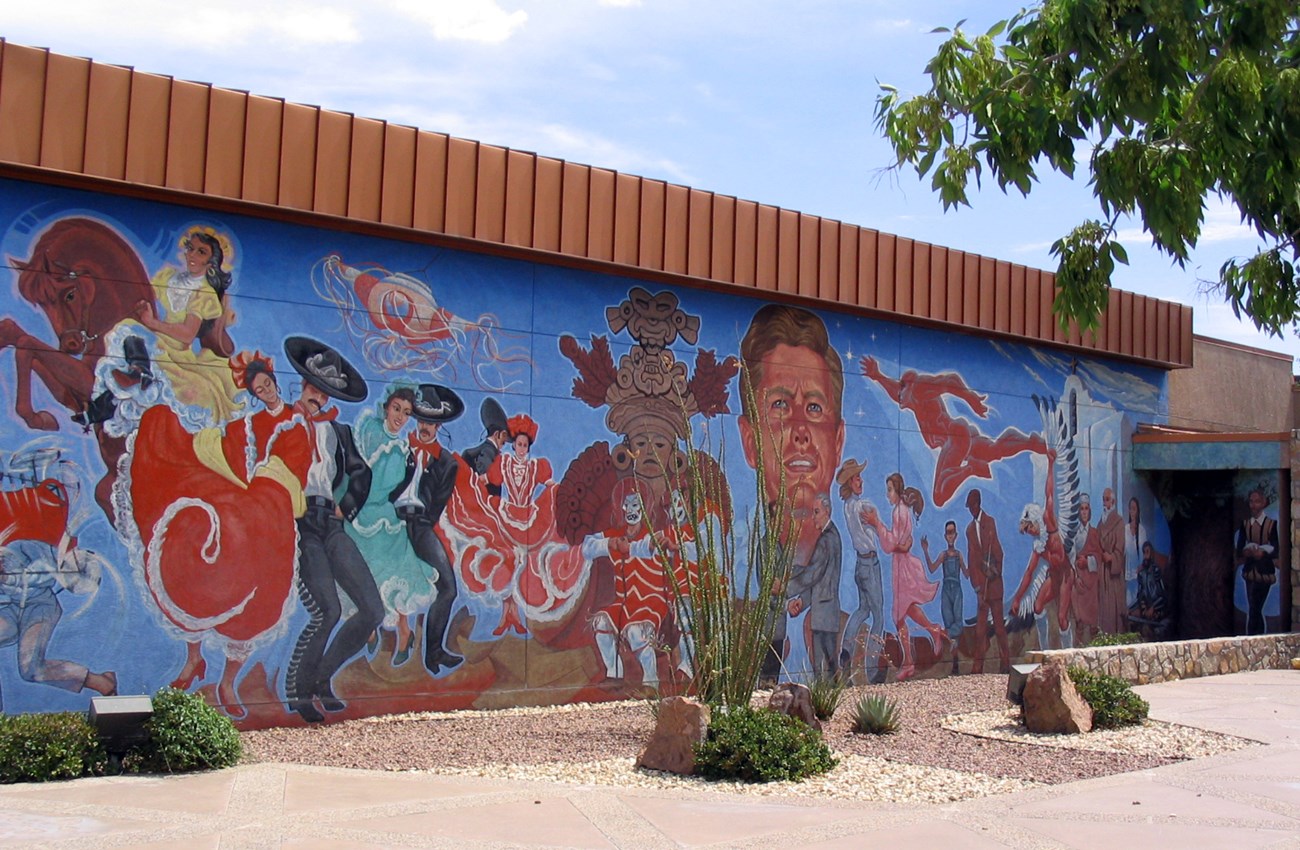
Cultural Blend
The third panel reflects the cultural blend of two countries. Beginning on the left, you see the great passion the Mexican people have for horsemanship, music and dance.Tlaloc, the Mesoamerican god of water, is next. The men in front of him perform the ancient, symbolic Dance of the Old Men with masks, canes, and movements representing the elderly.
President John F. Kennedy holds a place of honor. Although he was assassinated before the Chamizal Treaty was ratified and implemented, his vision and leadership made the diplomatic settlement of the 100-year boundary dispute possible. The two standing figures are Mexican President Adolfo López Mateos and U.S. President Lyndon B. Johnson, the leaders who celebrated the ratification of the treaty by their respective governments. They are shaking hands across the river as a sign of goodwill between the two countries.
To the right of Kennedy are examples of American music and dance. The figure reaching for the stars is symbolic of Kennedy’s support of the space exploration program.
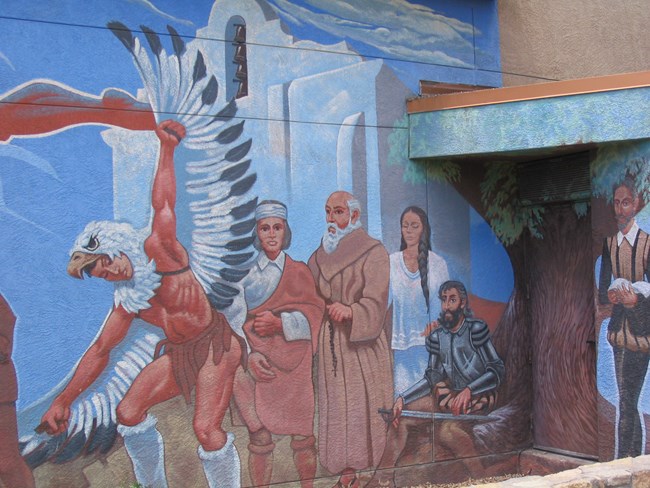
The Spaniards
The mission and Catholic priest represent the early churches of the area. The eagle dancer and the Pueblo Indian portray cultures native to the Southwest.
Hernán Cortés sits under a Montezuma bald cypress tree. La Malinche, the Native woman standing next to Cortés, assisted him as interpreter during the colonization of Mexico.
The last figure is Miguel de Cervantes the Spanish Golden Age author of Don Quixote.
